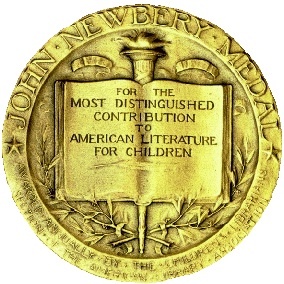With Mother's Day approaching, we thought it would be a fine time to revisit the history of everyone's favorite mother: Mother Goose. Whether she exists in your mind as a clucking bird, a gentle elderly woman, or a combination of both, the image of Mother Goose is universally synonymous with joy, childhood, storytelling, and safety. Her origins reach back to the sixteenth century, prior to the birth of the fairy tale, and her future attaches to the minds of millions of young children every year. But who is Mother Goose? Who came up with her, and what exactly does she mean?
French and American Theories of Origin
 By the time French writers Charles Perrault and Madame d’Aulnoy began recording the first formalized fairy tales, the concept of the Mother Goose figure who told them was already established.
By the time French writers Charles Perrault and Madame d’Aulnoy began recording the first formalized fairy tales, the concept of the Mother Goose figure who told them was already established.
The first recorded mention of her was in 1650 when Jean Loret wrote in his collection La Muse Historique that a particular piece was “...comme un conte de la Mère Oye,” or “like a Mother Goose story.” This casual mention of Mother Goose to his reader indicates an understood familiarity with the image, akin to mentioning ObamaCare, Godzilla, or Saint Nick in modern times. In other words, by the time we started talking about fairy tales, we somehow already knew who told them.
Perrault used the phrase in 1697 with the first published collection of fairy tales, Histoires ou contes du temps passes: Contes de ma mère l'Oye, which was translated to English in 1729 as Histories or Tales of Past Times, Told by Mother Goose. The connection was solidified, and the image of Mother Goose as teller of children’s tales has prevailed ever since.
Many have theorized the origins of the sweet bonnet-clad character, but none have ever successfully attached Mother Goose to an individual writer or orator. It is likely that she evolved orally in Europe as most fairy tales did, not appearing in a print until the same time as fairy tales were being recorded in France.
American colonists asserted in 1860 that Mother Goose originated with colonial printer Thomas Fleet, who they reported coined the term based on his serenading mother-in-law Elizabeth Foster Goose. Though records confirm the existence of both Fleet and his singing mother, no proof of the book Mother Goose’s Melodies he claimed to have published in 1719 has ever been found. The Fleet theory is dismissed by nearly all Mother Goose scholars and the mystery of her origins remains, however.
Notable Names Associated With Mother Goose
 John Newbery and his protégés, including Thomas Carnan, did their part to popularize the title Mother Goose. Carnan published Mother Goose's Melody in the mid-late 18th century, and we can all attest to the fact that the title Mother Goose continues to be linked to children's nursery rhymes.
John Newbery and his protégés, including Thomas Carnan, did their part to popularize the title Mother Goose. Carnan published Mother Goose's Melody in the mid-late 18th century, and we can all attest to the fact that the title Mother Goose continues to be linked to children's nursery rhymes.
Likewise, L. Frank Baum—whom you know for his creation of the world of Oz—actually wrote his first book with Mother Goose in mind. Indeed, Mother Goose in Prose (1897) is Baum's collection of 22 stories based on Mother Goose fairy tales. What's notable about this collection, particularly in light of our title question for this article, is the fact that Baum's introduction to his book traces the history and origins of Mother Goose. You can find his synopsis here. Our favorite line is Baum's final assessment of his motives for penning the collection:
While I have taken some pains to record the various claims to the
origin of Mother Goose, it does not matter in the least whether she
was in reality a myth, or a living Eliza Goose, Martha Gooch or the
"Mere Oye" of Perrault. The songs that cluster around her name are
what we love, and each individual verse appeals more to the childish
mind than does Mother Goose herself.
Quaint Image to Canon Keeper
In conclusion, the image of Mother Goose evolved from foggy beginnings in France and America to her universal position as childhood symbol during the 1800s with repeated productions of nursery rhyme collections. She was an easy reference to set children’s books apart from other anthologies, and at least one publisher in the 1900s also viewed the collectible nature of such books as an obvious reason to capitalize on the familiar title and wholesome image.
Having survived questions of origin, Mother Goose is now part of the canon of children’s literature and will likely retain her place as nursery muse for centuries to come.
This post has been revised from its original.









